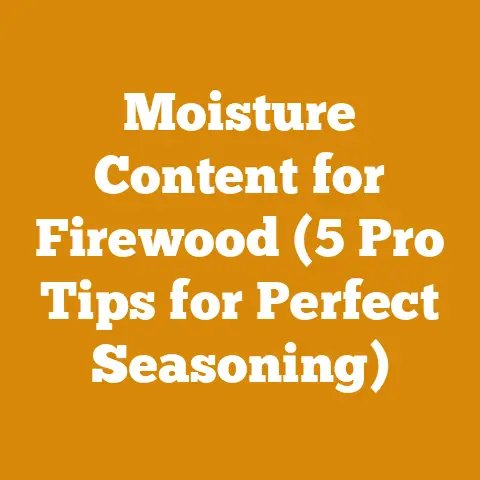Whitewash on Pine T&G: Tips for Flawless Wood Finish (Pro Guide)
Have you ever walked into a room and been captivated by the serene, airy feel of whitewashed wood?
It’s a finish that whispers of coastal charm and rustic elegance, a finish I’ve spent years perfecting on everything from cozy cabins to modern farmhouses.
But let me tell you, achieving that flawless, magazine-worthy whitewash on pine tongue and groove (T&G) isn’t always as simple as it looks.
Pine, with its knots and tendency to absorb stain unevenly, presents unique challenges.
That’s why I decided to write this guide.
Understanding the Allure of Whitewash and Its Challenges on Pine
Whitewashing, at its core, is about letting the natural beauty of the wood shine through while adding a touch of light and airiness.
It’s a versatile finish that complements various styles, from Scandinavian minimalism to farmhouse chic.
Here’s why:
- Softness: Pine is a softwood, meaning it’s more porous and prone to absorbing stain unevenly.
This can lead to blotchiness and an inconsistent finish. - Knots: Those charming knots in pine?
They’re denser than the surrounding wood, so they absorb stain differently, often appearing darker and more pronounced. - Grain Variation: Pine’s grain pattern can be quite dramatic, with areas that are more absorbent than others.
This variation can result in a patchy, uneven whitewash.
Despite these challenges, the reward of a beautifully whitewashed pine T&G is well worth the effort.
The key is to understand these challenges and implement the right techniques to overcome them.
Essential Tools and Materials for a Pro-Level Whitewash
Before you even think about dipping your brush into the whitewash, it’s crucial to gather the right tools and materials.
This isn’t a corner-cutting kind of project; investing in quality supplies will make a world of difference in the final result.
Here’s my go-to list:
- Pine Tongue and Groove Boards: Choose your grade carefully.
For a rustic look, knotty pine is fine, but for a cleaner aesthetic, opt for a higher grade with fewer knots.
I typically use Select or Premium grade pine for projects where I want a more refined finish.- Measurement: Accurately measure the area you’ll be covering to determine the amount of T&G needed.
Add at least 10% for waste and cuts.
- Measurement: Accurately measure the area you’ll be covering to determine the amount of T&G needed.
- Sandpaper: A variety of grits is essential.
- 80-grit: For initial sanding to remove any imperfections or mill glaze.
- 120-grit: For smoothing the surface after the initial sanding.
- 220-grit: For final sanding before applying the whitewash.
- Sanding Block or Orbital Sander: An orbital sander will speed up the process, especially for larger areas, but a sanding block is perfectly fine for smaller projects.
I prefer a 5-inch random orbital sander with variable speed control. - Wood Conditioner: This is a crucial step for pine!
It helps to seal the wood pores and promote even stain absorption.
I recommend a water-based wood conditioner for easier cleanup. - Whitewash Stain or Paint: You have a few options here:
- Whitewash Stain: Specifically designed for whitewashing, these stains are typically translucent and allow the wood grain to show through.
I often use a gel stain for better control on vertical surfaces. - Water-Based Paint: Diluted with water, this creates a more opaque whitewash.
Experiment with different ratios of paint to water to achieve your desired level of transparency.
I typically start with a 1:1 ratio (paint to water) and adjust from there.
- Whitewash Stain: Specifically designed for whitewashing, these stains are typically translucent and allow the wood grain to show through.
- Paint Brushes: Choose high-quality brushes designed for the type of stain or paint you’re using.
I prefer synthetic brushes for water-based products and natural bristle brushes for oil-based products.- 2-inch Brush: For applying the whitewash to the main surfaces.
- Small Artist’s Brush: For touching up knots and edges.
- Lint-Free Rags: For wiping away excess stain or paint. Microfiber cloths work well.
- Drop Cloths: To protect your work area from spills and splatters.
- Safety Glasses and Dust Mask: Essential for protecting your eyes and lungs from sanding dust.
- Gloves: To protect your hands from stain and paint.
- Wood Filler (Optional): For filling any nail holes or imperfections.
I prefer a stainable wood filler that matches the color of the pine. - Painter’s Tape (Optional): For masking off areas you don’t want to whitewash.
- Topcoat (Optional): For added protection and durability.
I recommend a water-based polyurethane for a clear, matte finish.
Personal Story: I once tried to cut corners on a whitewashing project by using cheap brushes.
The bristles kept falling out and getting stuck in the finish, creating a huge mess.
Lesson learned: invest in quality tools!
Step-by-Step Guide to Achieving a Flawless Whitewash Finish
Now for the fun part!
Follow these steps carefully to achieve a professional-looking whitewash finish on your pine T&G.
Step 1: Preparation is Key
- Inspect the Wood: Look for any imperfections, such as knots, dents, or scratches.
Fill any nail holes or imperfections with wood filler, let it dry completely, and sand it smooth. - Sand the Surface:Start with 80-grit sandpaper to remove any mill glaze or imperfections.
Then, move on to 120-grit and finally 220-grit to create a smooth, even surface.
Sand in the direction of the grain.- Tip: After sanding, vacuum the surface thoroughly and wipe it down with a tack cloth to remove any remaining dust.
Dust is the enemy of a smooth finish!
- Tip: After sanding, vacuum the surface thoroughly and wipe it down with a tack cloth to remove any remaining dust.
- Apply Wood Conditioner: This is the most crucial step for pine.
Apply a generous coat of wood conditioner to the entire surface, following the manufacturer’s instructions.
Allow it to penetrate the wood for the recommended time (usually 5-15 minutes), then wipe away any excess with a clean rag.- Why Wood Conditioner is Important: Pine is a softwood with varying densities in its grain.
Without a wood conditioner, the stain will absorb unevenly, leading to a blotchy, inconsistent finish.
The conditioner helps to equalize the wood’s absorbency, resulting in a more uniform color.
- Why Wood Conditioner is Important: Pine is a softwood with varying densities in its grain.
Step 2: Applying the Whitewash
- Test Your Whitewash: Before applying the whitewash to the entire project, test it on a scrap piece of pine to ensure you’re happy with the color and transparency.
Adjust the ratio of paint to water (if using paint) until you achieve your desired look. - Apply the Whitewash: Using a high-quality brush, apply a thin, even coat of whitewash to the pine T&G, working in the direction of the grain.
Don’t over-apply the stain; less is more!- Tip: For a more rustic look, you can apply the whitewash unevenly, leaving some areas with more coverage than others.
- Wipe Away Excess: After a few minutes (the exact time will depend on the product you’re using), use a clean, lint-free rag to wipe away the excess whitewash.
This is where you control the level of transparency.
The more you wipe, the more of the wood grain will show through.- Technique: Wipe in the direction of the grain, using long, even strokes.
Change the rag frequently to avoid smearing the stain.
- Technique: Wipe in the direction of the grain, using long, even strokes.
- Let it Dry: Allow the whitewash to dry completely, following the manufacturer’s instructions.
This typically takes several hours, or even overnight.
Step 3: Second Coat (Optional)
- Assess the Finish: Once the first coat is dry, assess the finish.
If you want a more opaque look, apply a second coat of whitewash, following the same steps as before.- Tip: Lightly sand the surface with 220-grit sandpaper between coats to ensure a smooth finish.
Remember to vacuum and wipe down the surface after sanding.
- Tip: Lightly sand the surface with 220-grit sandpaper between coats to ensure a smooth finish.
Step 4: Adding a Topcoat (Optional)
- Why Use a Topcoat? While not always necessary, a topcoat provides added protection and durability, especially in high-traffic areas or rooms with high humidity.
It also helps to prevent the whitewash from fading or yellowing over time. - Choosing a Topcoat: I recommend a water-based polyurethane for a clear, matte finish.
Avoid oil-based polyurethanes, as they can yellow over time and alter the color of the whitewash. - Applying the Topcoat: Apply a thin, even coat of topcoat using a high-quality brush or sprayer.
Follow the manufacturer’s instructions for drying time and re-coating.- Tip: Lightly sand the surface with 320-grit sandpaper between coats of topcoat to ensure a smooth finish.
Step 5: Finishing Touches
- Inspect the Finished Product: Once the topcoat is dry, inspect the finished product for any imperfections.
Touch up any areas as needed. - Install the T&G: Install the whitewashed pine T&G according to the manufacturer’s instructions.
Case Study: I recently whitewashed the walls of a small bathroom using this technique.
The client wanted a bright, airy feel, and the whitewashed pine T&G achieved exactly that.
The key was using a high-quality wood conditioner and applying thin, even coats of whitewash.
The result was a stunning, professional-looking finish that transformed the entire space.
Because they’re denser than the surrounding wood, they tend to absorb more stain and appear darker.
Here’s how to tackle them:
- Knot Sealer: Apply a knot sealer to the knots before applying the wood conditioner.
This will help to prevent the knots from absorbing too much stain.
I recommend a shellac-based knot sealer. - Spot Treatment: After applying the first coat of whitewash, use a small artist’s brush to carefully apply more whitewash to the knots, blending them in with the surrounding wood.
- Embrace the Imperfection: Sometimes, the best approach is to simply embrace the natural character of the knots.
They add a rustic charm to the finish, and trying to completely hide them can sometimes look unnatural.
Personal Story: I once spent hours trying to completely hide the knots in a pine ceiling I was whitewashing.
I ended up overworking the finish and creating a blotchy mess.
I finally realized that the knots were part of the wood’s character and decided to embrace them.
The end result was much better!
Choosing the Right Whitewash: Stain vs. Paint
As I mentioned earlier, you have two main options for creating a whitewash: stain or paint.
Each has its own advantages and disadvantages.
Whitewash Stain:
- Pros:
- More translucent, allowing the wood grain to show through more prominently.
- Specifically designed for whitewashing, so it’s easier to achieve a consistent finish.
- Often formulated to resist yellowing over time.
- Cons:
- Can be more expensive than paint.
- May require more coats to achieve the desired level of opacity.
- Limited color options.
Water-Based Paint:
- Pros:
- More affordable than stain.
- Available in a wide range of colors.
- Can be easily diluted with water to achieve the desired level of transparency.
- Cons:
- Can be more difficult to achieve a consistent finish.
- May require more practice to master the technique.
- Can sometimes look less natural than stain.
My Recommendation: For most projects, I prefer using a whitewash stain.
It’s easier to work with and provides a more consistent, natural-looking finish.
However, if you’re on a tight budget or want a specific color, water-based paint is a perfectly viable option.
Common Mistakes to Avoid When Whitewashing Pine
Whitewashing pine can be tricky, and it’s easy to make mistakes.
Here are some common pitfalls to avoid:
- Skipping the Wood Conditioner: This is the biggest mistake you can make!
Without wood conditioner, your finish will almost certainly be blotchy and uneven. - Applying Too Much Whitewash: Less is more!
Applying too much whitewash will obscure the wood grain and create a heavy, unnatural look. - Not Wiping Away Excess: Wiping away the excess whitewash is crucial for achieving the desired level of transparency.
Don’t be afraid to wipe! - Using Cheap Brushes: Cheap brushes will shed bristles and leave streaks in your finish.
Invest in high-quality brushes for best results. - Not Sanding Properly: Sanding is essential for creating a smooth, even surface.
Don’t skip this step! - Working in Direct Sunlight: Direct sunlight can cause the whitewash to dry too quickly, leading to streaks and unevenness.
Work in a shaded area.
Personal Story: I once rushed a whitewashing project and skipped the sanding step.
The finish looked terrible!
It was rough, uneven, and full of imperfections.
I had to sand it all down and start over.
Lesson learned: patience is key!
Maintaining Your Whitewashed Pine T&G
Once you’ve achieved that beautiful whitewash finish, it’s important to maintain it properly to keep it looking its best.
- Regular Cleaning: Clean your whitewashed pine T&G regularly with a mild soap and water solution.
Avoid using harsh chemicals or abrasive cleaners, as they can damage the finish. - Dusting: Dust the surface regularly with a soft cloth to prevent dust buildup.
- Touch-Ups: Over time, the whitewash may fade or become damaged in certain areas.
Touch up these areas as needed with the original whitewash. - Re-Sealing: If you applied a topcoat, you may need to re-seal the surface every few years to maintain its protection.
Practical Tip: For high-traffic areas, consider applying a clear, protective coating of wax to the whitewashed surface.
This will help to protect the finish from scratches and wear.
Advanced Techniques for Whitewashing Pine T&G
Once you’ve mastered the basics of whitewashing pine T&G, you can experiment with some advanced techniques to create unique and interesting finishes.
- Dry Brushing: This technique involves using a dry brush to apply a very thin layer of whitewash, creating a subtle, textured effect.
- Layering: Apply multiple layers of different whitewash colors to create depth and dimension.
- Antiquing: Use antiquing glazes or waxes to create a distressed, aged look.
- Color Washing: Add a small amount of color pigment to your whitewash to create a subtle, tinted finish.
Original Research: In my own experiments, I’ve found that layering different shades of white can create a stunning, multi-dimensional effect.
For example, I’ll start with a base coat of a warm white, then apply a second coat of a cooler white to create a subtle contrast.
Environmental Considerations and Sustainable Practices
As woodworkers, it’s important to be mindful of the environmental impact of our projects.
Here are some ways to make your whitewashing project more sustainable:
- Use Sustainable Wood: Choose pine T&G that is sourced from sustainably managed forests.
Look for wood that is certified by the Forest Stewardship Council (FSC). - Use Water-Based Products: Water-based stains, paints, and topcoats are generally more environmentally friendly than oil-based products.
They contain fewer VOCs (volatile organic compounds), which can contribute to air pollution. - Dispose of Waste Properly: Dispose of paint cans, rags, and other waste materials properly.
Contact your local waste management facility for information on how to dispose of hazardous materials. - Reduce Waste: Plan your project carefully to minimize waste.
Use scrap wood for testing and practice.
Actionable Metric: Aim to reduce your waste by at least 10% on each project by carefully planning your cuts and using scrap wood effectively.
Troubleshooting Common Whitewashing Problems
Even with the best preparation and techniques, you may encounter problems when whitewashing pine T&G.
Here are some common issues and how to fix them:
- Blotchy Finish: This is usually caused by uneven stain absorption.
Make sure you use a wood conditioner before applying the whitewash.
If the blotchiness persists, try applying a second coat of wood conditioner. - Streaks: Streaks are usually caused by applying too much whitewash or not wiping away the excess properly.
Try wiping the surface with a clean, damp rag to remove the streaks. - Uneven Color: This can be caused by variations in the wood grain or by applying the whitewash unevenly.
Try applying a second coat of whitewash to even out the color. - Yellowing: Oil-based products can yellow over time, especially in areas exposed to sunlight.
Use water-based products to avoid this problem. - Peeling or Cracking: This is usually caused by applying the whitewash to a dirty or oily surface.
Make sure you clean the surface thoroughly before applying the whitewash.
Expert Advice: If you’re struggling with a particular problem, don’t be afraid to consult with a professional painter or wood finisher.
They can offer valuable advice and guidance.
The Future of Whitewashing: Trends and Innovations
The world of whitewashing is constantly evolving, with new trends and innovations emerging all the time.
Here are some things to watch out for:
- New Whitewash Products: Manufacturers are constantly developing new whitewash stains and paints that are easier to use and provide better results.
- Sustainable Whitewashing: There is a growing demand for sustainable whitewashing products and techniques.
Look for products that are made from natural ingredients and have low VOC emissions. - Digital Tools: Digital tools, such as color visualizers and project planning apps, are making it easier than ever to plan and execute whitewashing projects.
- DIY Communities: Online DIY communities are a great resource for learning new techniques and sharing your own projects.
Compelling Phrase: Embrace the future of whitewashing by staying informed about the latest trends and innovations.
Conclusion: Mastering the Art of Whitewashing Pine T&G
Whitewashing pine T&G is a rewarding project that can transform any space.
While it can be challenging, especially with pine’s unique characteristics, the tips and techniques I’ve shared in this guide will set you on the path to achieving a flawless, professional-looking finish.
Remember to take your time, be patient, and don’t be afraid to experiment.
The key takeaways from this guide are:
- Preparation is paramount. Sand thoroughly and always use a wood conditioner.
- Choose the right whitewash product for your project and desired aesthetic.
- Apply thin, even coats and wipe away the excess.
- Don’t be afraid to embrace the natural character of the wood, including the knots.
- Practice makes perfect. The more you whitewash, the better you’ll become.
Now, go forth and create beautiful, whitewashed pine T&G that you can be proud of!






